Brent Spence and 'companion' bridge could see 40% jump in traffic
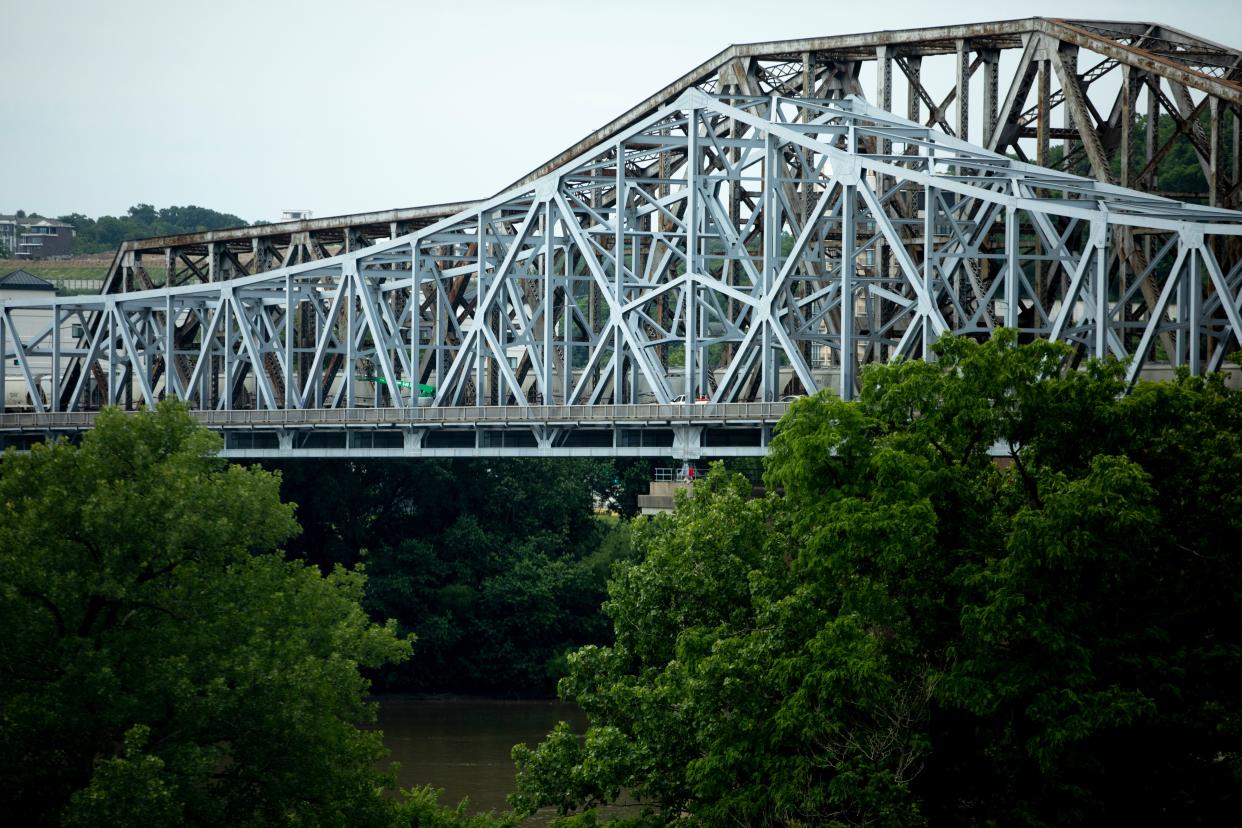
- Oops!Something went wrong.Please try again later.
The Brent Spence Bridge carries twice as much traffic than it was designed to carry in the early 1960s.
That’s been the data point and rallying cry for more than 20 years. Ohio and Kentucky transportation officials maintain they have been searching for relief the entire time.
Now that they’ve settled on what’s called the Brent Spence Bridge Corridor Project – with a new "companion" bridge for Interstate 71-75 travel across the Ohio River – Brent Spence traffic will decline.
But it could still be over capacity given two key facts. First, future traffic is projected to jump more than 40% within the next two decades. And, secondly, there's no way to know how many drivers will take the new bridge instead of the current one.
“I highly doubt it would be a 50/50 split,” said Matt Bruning, spokesperson for the Ohio Department of Transportation. “I’d suspect the companion bridge would have the lion’s share of the traffic since that’s where through traffic on both interstates would go.”
The good news for motorists fed up with Brent Spence backups: They still have six other options for crossing the Ohio River between Ohio, Kentucky and Indiana. The new yet-to-be named bridge – to run adjacent and just west of the Brent Spence – will be No. 7.
Brent Spence congestion: A two-bridge solution
Ohio and Kentucky considered a two-bridge solution as early as 2006. A planning study from that year outlined 49 options, none of which looks exactly like what we decided upon this spring.
With federal dollars finally in sight, the states confirmed that the $2.77 billion project would include two bridges, with improvements to I-75 and I-71 from the Western Hills Viaduct in Ohio to the Dixie Highway in Kentucky. The new double-decker bridge will include 10 lanes, with the Brent Spence reduced from eight to six lanes overall.
Earlier plans considered reconfiguring the current Brent Spence to add capacity.
“That’s what they did in 1985 by eliminating the shoulders,” Bruning said.
That decision proved dangerous. While the bridge expanded from three to four lanes in each direction that year – when traffic averaged about 91,000 vehicles a day – it left only foot-wide shoulders for breakdowns and accidents.
And it did not satisfy the need.
Originally designed to absorb about 80,000 vehicles a day when opened in 1963, Brent Spence has recorded between about 140,000 and160,000 vehicles a day over the past two decades, tracking by the Ohio-Kentucky-Indiana Regional Council of Governments shows. Volume hit a high of more than 171,000 vehicles a day in 2014 and a low of about 129,000 in 2020 as the pandemic took hold and an accident caused the bridge to shut down for six weeks.
Truck traffic on I-75 – which carries $2 billion in freight a day from Florida to Canada – has been a key contributor.
And that has created headaches for moving into and through downtown Cincinnati, with that portion of I-71/75 ranked at the second “most congested” this year and last for trucks, according to the American Transportation Research Institute.
A video of that bottleneck shows that traffic slows to less than 15 mph at least a half dozen times in a 48-hour period.
Given sustained growth in freight traffic, the congestion will continue until the new bridge opens to absorb interstate travelers.
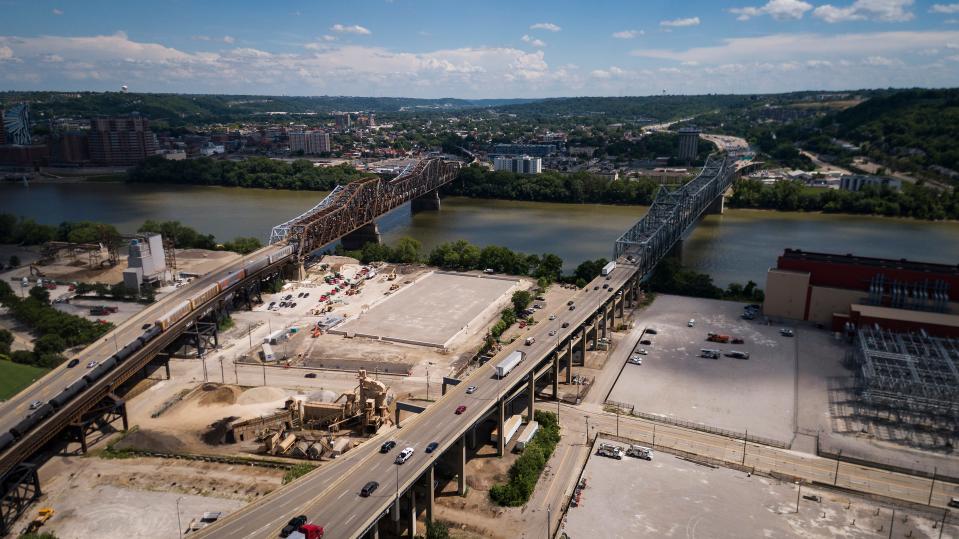
Just-in-time toothbrush
Robert Koehler ordered an electric toothbrush online on Sunday morning. “I had it Sunday afternoon – and it came from a truck,” said Koehler, deputy executive director of the Ohio-Kentucky-Indiana Regional Council of Governments.
Growth and ease of online shopping and consumer demand for “just-in-time” delivery has created ever-more freight trucks on American roadways, he said.
“If you have to wait three days for something it’s like. ‘Oh my gosh, these people are terrible.’ ”
OKI considered I-75’s importance to freight movement in projecting future Brent Spence Bridge traffic. Some 30,000 trucks make up the daily volume on the bridge, which was designed for just 3,000 to 4,000, OKI reports.
Ohio and Kentucky used the OKI estimate on future total volume – 227,900 vehicles a day 18 years from now – in applications for federal grant dollars. That's 42% more than 160,000, the figure most often cited as current daily traffic.
Much of the increased traffic will come from trucks rather than commuters, Koehler said. That sector is coming back from its pandemic dip, but slowly.
“Freight movement is by all indications not going to slow down,” he said.
What else could the project include?
Brian Boland is skeptical that the Brent Spence and its companion bridge will ever see close to 228,000 vehicles a year. As more people move downtown, fewer will need to use interstates and bridges to get to work, he believes.
He is not against the bridge project, he said. But he believes planners are missing a giant opportunity to reimagine the west side of downtown Cincinnati in the project design.
His group, Bridge Forward, wants the city and state to consider a way to use nearly 30 acres of land − located west of Central Avenue, between Fourth and Sixth streets − for an expanded Duke Convention Center, park, hotels and other features.
"Dressing the table for the next generation should be the ultimate goal," he said.
Boland said he and his supporters have attracted the attention of some key decision-makers. But they are working against the clock, with design work due to start in the coming months. His short-term goal is to require engineers bidding on the project to incorporate some Bridge Forward ideas in their bids.
Drivers divert to avoid slow bridges
Projecting bridge traffic can be dicey, OKI’s Koehler said. Models that account for population, employment and even seasons can change quickly when a given roadway changes.
When one bridge needs maintenance or repairs, drivers divert to another. The same happens when bridges shut down, in part or full, because of accidents or other mishaps.OKI data correlates with such events.
The Clay Wade Bailey Bridge over the Ohio picked up some traffic last year when the Brent Spence was being painted. Combs-Hehl Bridge use dipped in recent years because of rehabilitative work and the pandemic. A ramp closure on the Daniel Beard Bridge held down traffic in the first half of this year. Traffic on the John A. Roebling Bridge plummeted because it was closed from February 2021 until this April for repairs.
And Brent Spence lost traffic to at least two other bridges – the Clay Wade Bailey and Taylor-Southgate – when it closed for six weeks in late 2020, following a fiery crash that involved two semi-trucks.
“Every bridge has a unique set of factors that affects its traffic counts over time,” said Jake Hessling, OKI’s manager of communications and legislative affairs.
The pandemic, meanwhile, pushed down numbers on every roadway. Collectively, the seven Greater Cincinnati bridges are expected to end 2022 with about 10% less traffic than in 2019.
When the new bridge opens, it is most likely to pull from Clay Wade Bailey, Taylor-Southgate and Daniel Beard, OKI believes.
For the next six and a half years – that’s from now until the new bridge is expected to be ready – the seven area bridges and one pedestrian-only structure will provide passage for upwards of a half million vehicles and people on foot a year.
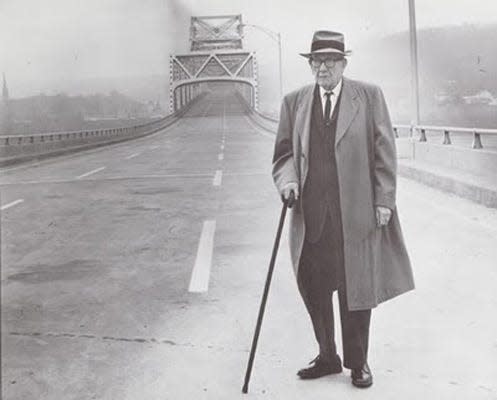
Brent Spence history
The Brent Spence Bridge, built in 1963, is considered a cantilevered truss bridge. It currently carries both local traffic and vehicles traveling I-71 and I-75. Its top deck, with four lanes, carries Kentucky-bound traffic. The bottom deck, with four lanes, takes vehicles north into Ohio.
The Brent Spence was named for Kentucky's longest-serving congressman at the time, a Newport native who retired in January 1963 after 30 years in office.
When the 1,763-foot bridge opened in November 1963, it carried three lanes of traffic on both decks. In 1985, the emergency shoulders were eliminated to create the fourth lanes.
In recent years, the Brent Spence has been in and out of the headlines mostly as Ohio and Kentucky talked about plans for its replacement or expansion. In September 2011, the bridge made news when chunks of concrete from the Ohio side ramp fell onto a vehicle. In November 2020, the crash that caused a fire put the bridge back in the spotlight.
Clay Wade Bailey Bridge history
The Clay Wade Bailey Bridge is also a cantilever bridge. Opened in 1974, it carries U.S. Route 42 and U.S. Route 127 traffic across the Ohio. The 675-foot bridge has one lane in each direction with a center lane that changes between north and south depending on the time of day.
The bridge was named after a prominent reporter for The Kentucky Post, a publication which ceased publication in 2007 along with sister paper, The Cincinnati Post. Bailey spent most of his 46-year career covering politics in Frankfort, Kentucky.
Combs-Hehl Bridge history
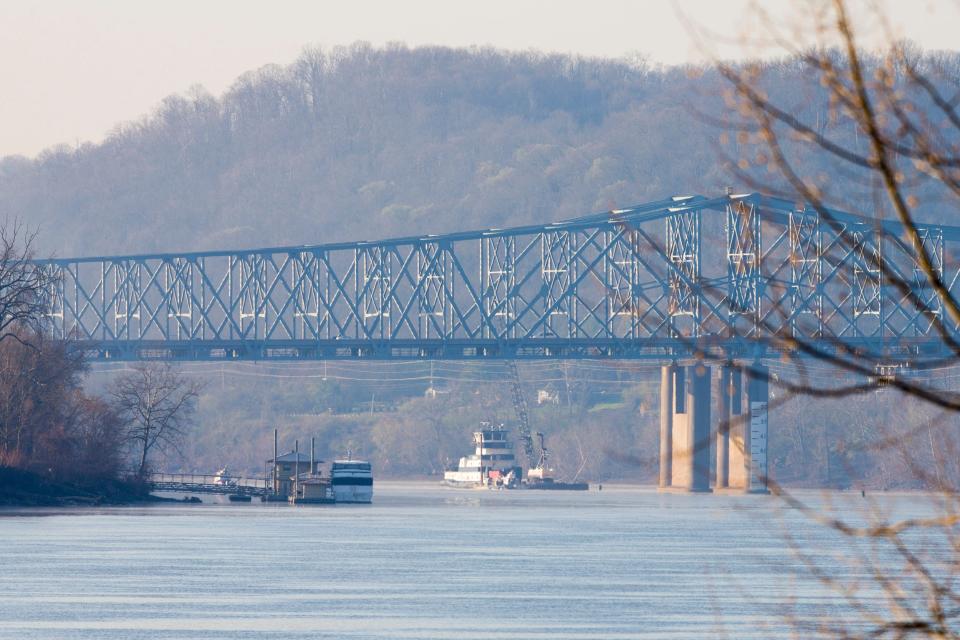
The Combs–Hehl Bridge, with its single pier, is also a cantilever design. It carries Interstate 275 traffic across the Ohio, connecting the eastern side of Cincinnati, Ohio (near Coney Island amusement park) to Campbell County, Kentucky. It opened in 1979.
The 1,510-foot bridge is named for former Kentucky Gov. Bert T. Combs and former Campbell County Judge Executive Lambert Hehl – but East Siders sometimes call it the Coney Island Bridge.)
(Pro-tip for eastside commuters: The fastest route to downtown Cincinnati is the Combs-Hehl. Go two miles on I-275, then pick up Interstate 471 north to downtown.)
Daniel Carter Beard Bridge history
The Daniel Carter Beard Bridge is better known as the Big Mac because its yellow paint makes it resemble the McDonald’s signature M.
The 2,100-foot Beard bridge was installed in 1976, and carries eight lanes of I-471 traffic between Cincinnati and Newport, Kentucky.
The bridge is named for one of the founders of the Boy Scouts of America. Beard’s boyhood home at 322 E. Third St. in Covington is a National Historic Landmark which overlooks the Ohio and Licking rivers.
John A. Roebling Suspension Bridge history
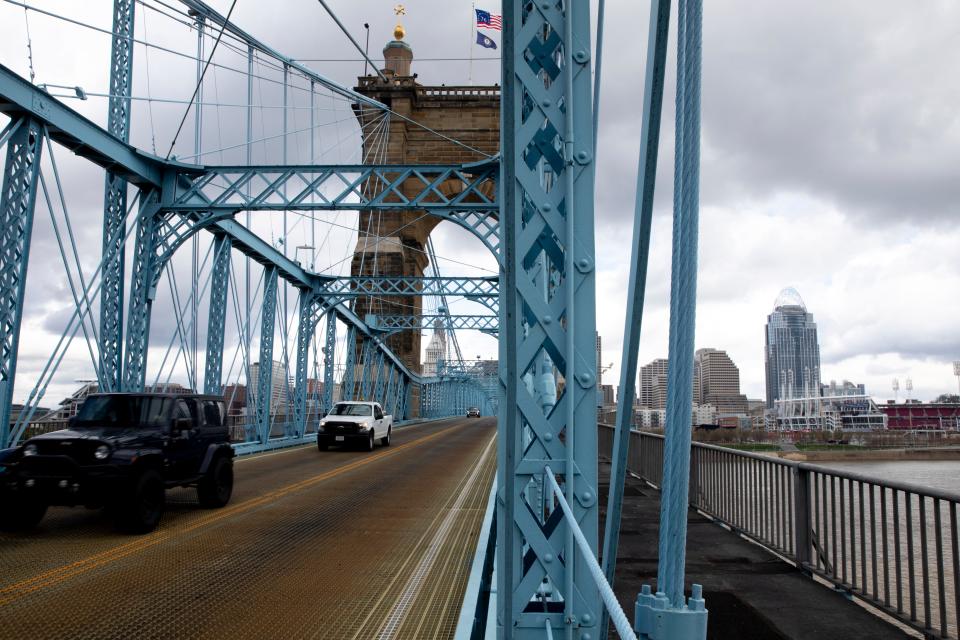
The John A. Roebling Suspension Bridge, originally known as the Cincinnati-Covington Bridge, runs between Cincinnati and Covington.
When opened in 1866, it was the longest suspension bridge in the world. That status changed in 1883 by the opening of Roebling's famous Brooklyn Bridge. The 1,642-foot bridge was named for its designer and builder in 1983, after being known as the Covington-Cincinnati Suspension Bridge or the Ohio River Bridge for more than a century.
Pedestrians use the bridge to travel between Covington and downtown Cincinnati.
Early on, ramps took vehicles from the bridge to the Dixie Terminal building used for streetcars. The terminal was intended to connect, underground, with the never-built Fountain Square Station of the never-built Cincinnati Subway. By the 1950s and the end of streetcar service, the terminal was used for busses. When the bus service ended, in the late 1990s, the ramps from the bridge were removed.
Taylor-Southgate Bridge history
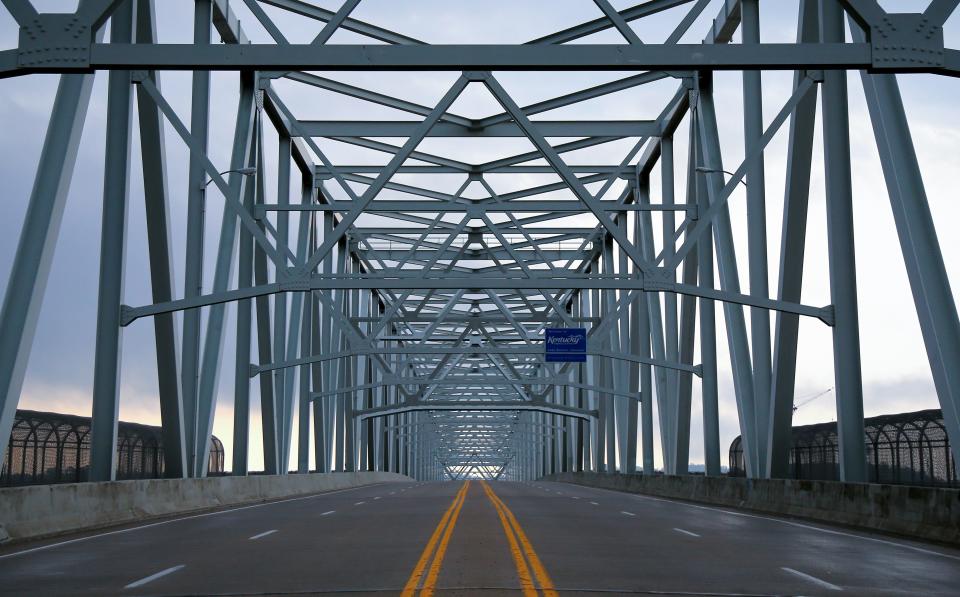
The Taylor–Southgate Bridge is considered a continuous truss bridge. Built in 1995 with a total span of 1,850 feet, the bridge moves four lanes of U.S. Route 27 traffic from Cincinnati to Newport.
The bridge is named for the families of James Taylor V. and Richard Southgate, two important early settlers of Newport. Taylor was a banker and builder who was cousin to future presidents James Madison and Zachary Taylor. Southgate served in Congress (both the U.S. House and Senate). His son, William Wright Southgate, served in the Kentucky House and U.S. Congress.
The Taylor-Southgate replaced the Cincinnati-Newport Bridge or what some people called the Central Bridge. That truss bridge, built in 1890, was razed in 1992, to the great disappointment of a site called HistoricBridges.org.
“The demolition of this bridge was one of the greatest atrocities against historic structures in the United States ever encountered in the post-urban-renewal era,” the site said.
Carroll Lee Cropper Bridge
The Carroll Lee Cropper Bridge is a steel arch-shaped truss bridge that takes I-275 traffic over the Ohio River and connects Indiana and Kentucky. Opened in 1977, the four-lane structure spans 1,759 feet.
The bridge is the only one across the river for 20 miles west of downtown Cincinnati.
The bridge is named for a judge who served Boone County from 1942 to 1962. Cropper was born on a farm in 1897, served in World War I and ran Franklin D. Roosevelt’s Boone County campaign for president in 1932.
Purple People Bridge history
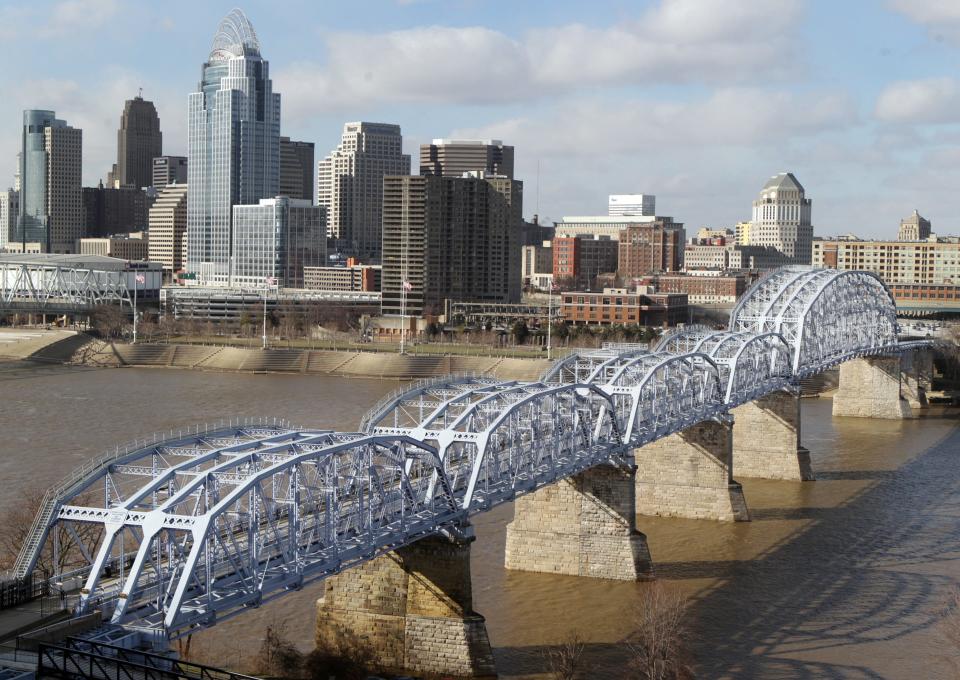
The Newport Southbank Bridge – known now as the Purple People Bridge – opened in 1872 as the first railroad bridge over the Ohio between Cincinnati and Northern Kentucky.
Over the decades, the half-mile structure accommodated trains, horse-and-buggy travelers, cars, streetcars and pedestrians. It went by three different names over time, becoming the pedestrian-only Purple People Bridge after Newport Southbank Bridge Co. purchased it in 2001.
More than over 800,000 people now cross the bridge each year to commute to work, exercise or attend events, according to the bridge’s site.
Suspension? Truss? Cantilevered? What?
Bridge builders use very specific vocabulary to describe their designs. Here are key definitions:
A suspension bridge supports the weight of the deck with vertical cables suspended from larger cables that run between towers. The towers are anchored at each end.
A truss bridge employs a load-bearing design comprised of wooden or metal triangles, known as trusses.
A cantilever bridge is built using cantilevers, structures that project horizontally into space, supported on only one end.
So what will the new bridge look like?
That’s to be determined. The states are requesting design proposals by the end of February and will select the contractor by May 30.
Planners want to break ground by the end of 2023 and open the new bridge by the end of 2028.
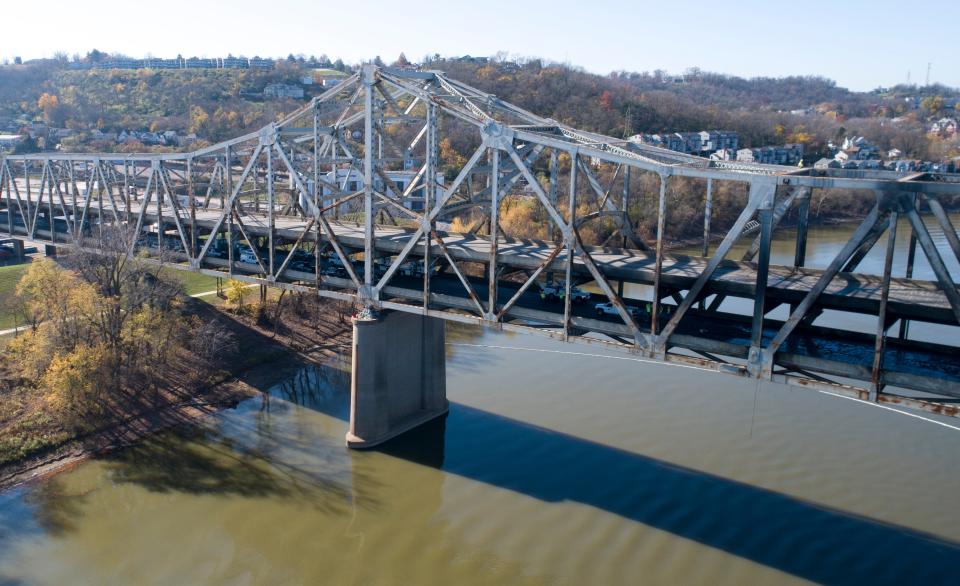
This article originally appeared on Cincinnati Enquirer: Brent Spence Bridge: Don't expect new 'companion' to end congestion
